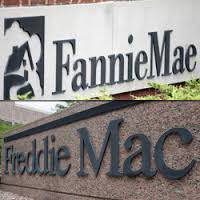FHFA Reports Fannie and Freddie Progress on Key Regulatory Objectives

The Federal Housing Finance Agency (FHFA) yesterday released a Progress Report outlining the various activities Fannie Mae and Freddie Mac undertook in 2017 to meet FHFA’s regulatory objectives for the firms. FHFA first outlined its goals for Fannie Mae and Freddie Mac in its 2014 Strategic Plan for Enterprise Conservatorship and provided further details in its 2017 Scorecard for Fannie Mae, Freddie Mac, and Common Securitization Solutions (CSS).
Both the Strategic Plan and the Scorecard laid out three core objectives for Fannie Mae and Freddie Mac: maintaining credit availability and foreclosure prevention activities; reducing taxpayer risk through increasing the role of private capital in the mortgage market; and continuing to build a new common securitization platform for Fannie Mae and Freddie Mac mortgage-backed securities (MBS). In general, the report finds that both firms have made progress toward meeting their objectives for all three categories.
Credit Availability and Foreclosure Prevention Activities
The report outlines various activities Fannie Mae and Freddie Mac undertook last year to help increase single-family lending to underserved borrowers, including conducting market research, studying alternative credit scoring models, and increasing access to housing counseling services. It also cites efforts by both firms to increase access to credit for non-English-speaking borrowers, develop new loss mitigation options, and reduce the amount of older delinquent loans in their portfolios. Fannie Mae and Freddie Mac also began last year an ongoing multi-year study of the challenges and opportunities facing the mortgage servicing market.
In addition, the report finds that Fannie Mae and Freddie Mac continued to support financing for underserved sectors of the multifamily market, including units affordable to low- and moderate-income tenants, subsidized affordable housing, manufactured housing communities, small multifamily properties, affordable rural housing, and energy. FHFA has excluded financing for these types of activities from the annual caps on new multifamily business that it places on the firms each year ($36.5 billion in 2017 and 2018). Such excluded activities accounted for a majority of both Fannie Mae’s and Freddie Mac’s multifamily business in 2017.
Increased Private Capital
The 2017 Scorecard directed Fannie Mae and Freddie Mac to increase their use of risk-sharing transactions in both single-family and multifamily activities to reduce their risk exposure. Specifically, it mandated that both firms transfer a “meaningful” portion of the credit risk on at least 90 percent of the unpaid principal balance of most newly acquired single-family mortgages, and 80 percent of the unpaid principal balance of newly acquired multifamily loans. According to the report, both firms exceeded these objectives in 2017. The report also credits Fannie Mae and Freddie Mac with reducing their retained mortgage portfolios.
Common Security and Platform
FHFA also outlines the steps both Fannie Mae and Freddie Mac took to develop and implement both a Common Securitization Platform (CSP) and a common MBS. FHFA recently announced that both firms will begin issuing the common MBS, through the CSP, on June 3, 2019. Freddie Mac has traded and administered its own securities through the CSP since November 2016.

